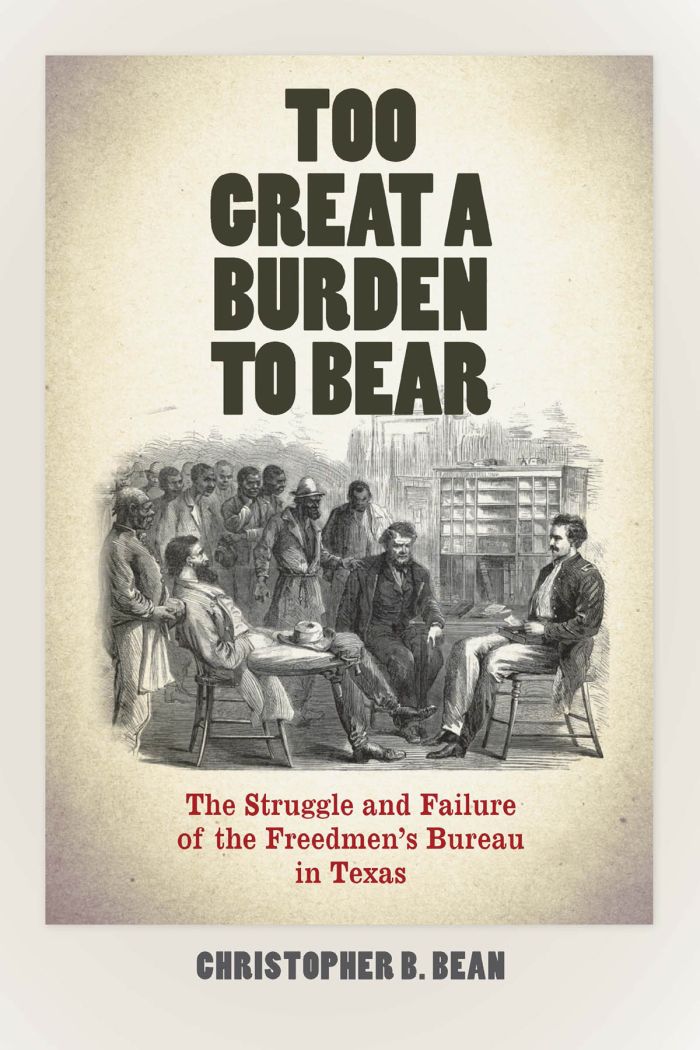Too Great a Burden to Bear
The Struggle and Failure of the Freedmen's Bureau in Texas

This book can be opened with

In its brief seven-year existence, the Freedmen’s Bureau became the epicenter of the debate about Reconstruction. Historians have only recently begun to focus on the Bureau’s personnel in Texas, the individual agents termed the “hearts of Reconstruction.” Specifically addressing the historiographical debates concerning the character of the Bureau and its sub-assistant commissioners (SACs), Too Great a Burden to Bear sheds new light on the work and reputation of these agents.
Focusing on the agents on a personal level, author Christopher B. Bean reveals the type of man Bureau officials believed qualified to oversee the Freedpeople’s transition to freedom. This work shows that each agent, moved by his sense of fairness and ideas of citizenship, gender, and labor, represented the agency’s policy in his subdistrict. These men further ensured the former slaves’ right to an education and right of mobility, something they never had while in bondage.
Rooted in bureau, census, and
—Dr. Brlan Matthew Jordan, Civil War News
military records, Bean’s research is
nothing short of exhaustive...this is a
solid study—accessibly written and
deftly argued.
Christopher Bean's Too Great a Burden to Bear makes a significant contribution to Reconstruction studies. Deftly combining storytelling with systematic quantitative analyses of the evidence, Bean offers new information, not just on the agents themselves, but also on the largest issues in Reconstruction historiography.—J. William Harris
Steeped in Reconstruction historiography, Bean's work aims to replace stereotypes of agents as either occupying carpetbaggers or corrupt and colluding oppressors of freedpeople.—Journal of Southern History
...Too Great a Burden to Bear is an interesting and well-written account of the Freedmen’s Bureau, its agents, and several years of operations in Texas.—Relations Industrielles/Industrial Relations
Bean has added significantly to our understanding of the bureau and its operations in Texas. He also provides a model approach that might be used fruitfully to examine the bureau elsewhere, helping scholarship about the bureau at the local level to move beyond the particular to the general. Anyone interested in the Reconstruction Era in the South, whether scholar or member of the general public, should find this book informative.—Southwestern Historical Quarterly

